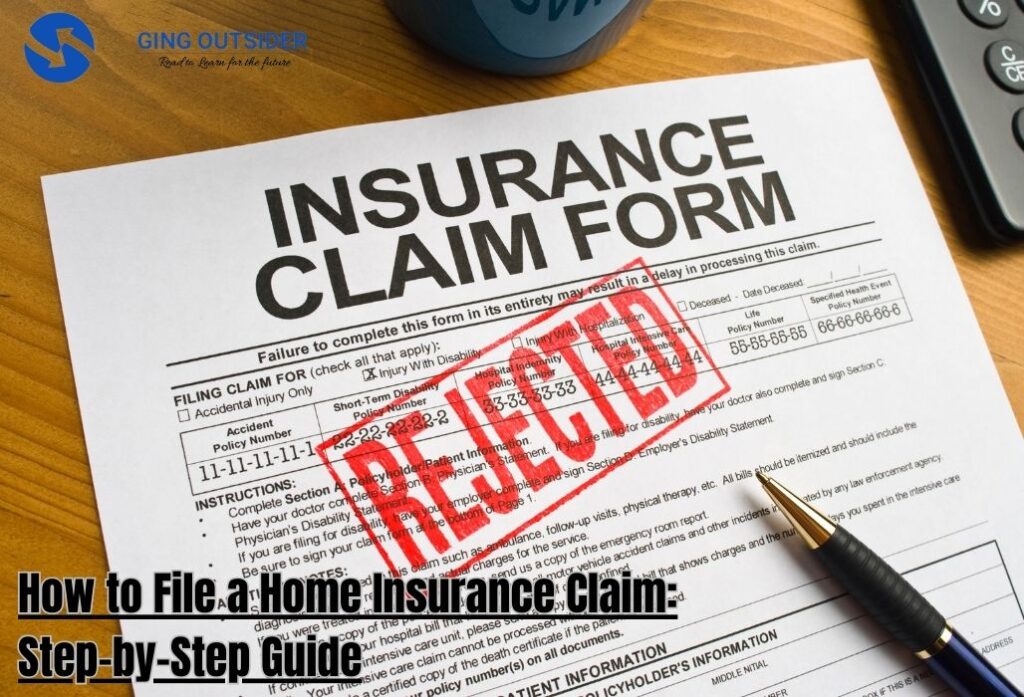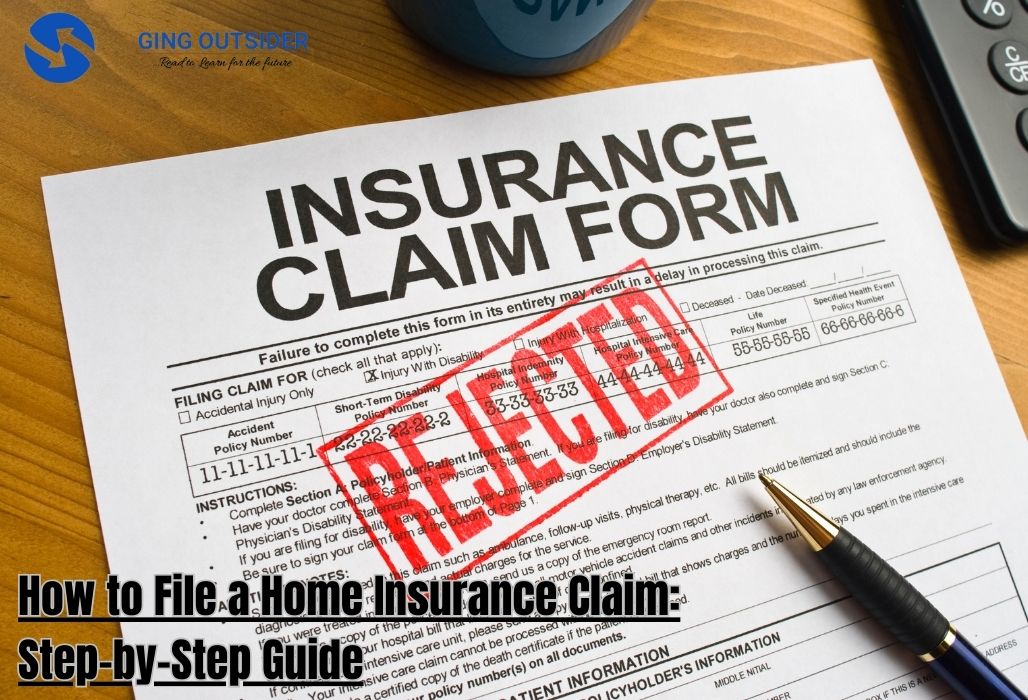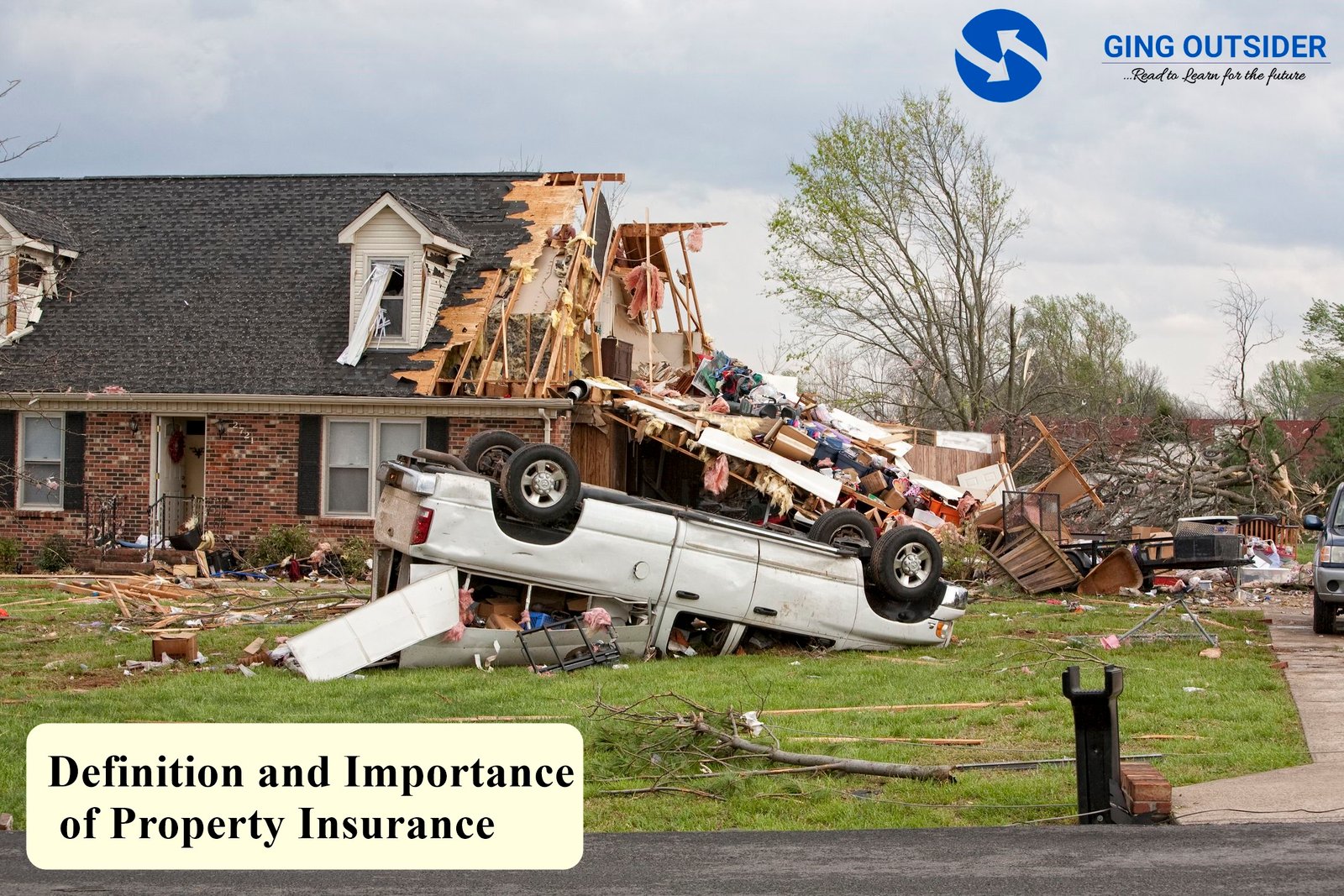Filing a home insurance claim can feel like a daunting task, especially during a stressful time such as property damage or loss. However, understanding the process and following a structured approach can help streamline the claim process and ensure you receive the compensation you deserve. In this comprehensive guide, we’ll walk you through the steps involved in filing a home insurance claim, from assessing the damage to communicating with your insurance company and navigating the claims process effectively.

Understanding Home Insurance
Home insurance, also known as homeowners insurance, is a type of insurance policy that provides financial protection against damage or loss to a person’s home and its contents. It typically covers various perils, such as fire, theft, vandalism, and natural disasters, depending on the terms and conditions of the policy. Home insurance policies may also include liability coverage, which protects homeowners against legal claims for property damage or bodily injury caused to others on their property.
Filing a Home Insurance Claim
Here’s a step-by-step guide on how to file a home insurance claim:
1. Assess the Damage
Before filing a home insurance claim, it’s crucial to assess the extent of the damage to your property. Take photos or videos of the affected areas to document the damage thoroughly. This documentation will serve as evidence to support your claim and can help expedite the process. Additionally, make a detailed inventory of any damaged or lost items, including their value and any relevant receipts or invoices.
2. Review Your Policy
Reviewing your home insurance policy is essential to understanding what is covered and what is not. Familiarize yourself with your policy’s terms, conditions, and coverage limits, including any deductibles or exclusions. This will help you determine whether the damage is eligible for coverage under your policy and what steps you need to take to file a claim.
3. Contact Your Insurance Company
Once you’ve assessed the damage and reviewed your policy, contact your insurance company as soon as possible to report the claim. Most insurance companies have a claims hotline or online portal where you can initiate the claims process. Provide them with all the relevant information about the damage, including the date and cause of the incident, as well as your policy number and contact details.
4. Meet with the Claims Adjuster
After filing a claim, your insurance company will typically assign a claims adjuster to assess the damage in person. Schedule a time for the adjuster to visit your property and provide them with access to the affected areas. Be prepared to show them any documentation or evidence you’ve gathered, such as photos, videos, or receipts. The adjuster will evaluate the damage and determine the amount of compensation you’re entitled to under your policy.
5. Provide Additional Documentation
Throughout the claims process, your insurance company may request additional documentation to support your claim. This could include repair estimates from contractors, invoices for temporary repairs, or proof of ownership for damaged or lost items. Be prompt in providing any requested documentation to avoid delays in processing your claim.
6. Review the Settlement Offer
Once the claims adjuster has assessed the damage and gathered all necessary information, your insurance company will provide you with a settlement offer. Review the offer carefully to ensure it accurately reflects the extent of the damage and the coverage provided by your policy. If you have any questions or concerns about the settlement offer, don’t hesitate to discuss them with your insurance company or seek advice from a legal or insurance professional.
7. Negotiate if Necessary
If you believe the settlement offer is insufficient to cover the full cost of the damage, you have the right to negotiate with your insurance company. Provide them with any additional evidence or documentation to support your case, and be prepared to make a counteroffer. Keep the lines of communication open and remain persistent in advocating for fair compensation for your losses.
8. Accept the Settlement
Once you and your insurance company have reached a mutually agreeable settlement, you can accept the offer and begin the process of repairing or replacing the damaged property. Be sure to follow any instructions provided by your insurance company regarding the disbursement of funds and the completion of repairs. Keep records of all expenses related to the claim, including receipts for repairs and replacements, for your records.
9. Follow Up as Needed
Even after accepting a settlement, it’s important to follow up with your insurance company to ensure that all aspects of the claim have been satisfactorily resolved. If you encounter any issues or delays in receiving payment or completing repairs, don’t hesitate to reach out to your insurance company for assistance. Keeping lines of communication open can help expedite the resolution of any outstanding issues and ensure a smooth claims process.
Types of Home Insurance
There are several types of home insurance policies available, each offering different levels of coverage to meet the diverse needs of homeowners:
- HO-1 Basic Form: This is a basic and limited form of coverage that typically protects against specific perils listed in the policy, such as fire, theft, vandalism, and certain types of natural disasters.
- HO-2 Broad Form: This type of policy provides broader coverage than HO-1 and typically protects against a wider range of perils, including those covered under HO-1, as well as additional perils like water damage, falling objects, and damage from the weight of ice, snow, or sleet.
- HO-3 Special Form: The most common type of home insurance policy, HO-3 offers comprehensive coverage for the structure of the home against all perils except those specifically excluded in the policy. Personal property coverage is typically provided on a named-peril basis.
- HO-4 Renter’s Insurance: Designed for renters rather than homeowners, this policy covers personal belongings and liability protection for renters living in a rented property.
- HO-5 Comprehensive Form: Similar to HO-3 but with broader coverage for personal belongings, HO-5 policies typically provide all-risk coverage for both the structure of the home and personal property.
- HO-6 Condo Insurance: Tailored for condominium owners, this policy covers personal belongings, improvements to the interior of the unit, and liability protection for condo owners.
- HO-7 Mobile Home Insurance: Specifically designed for mobile or manufactured homes, this policy provides coverage for the structure of the home, personal belongings, and liability protection.
- HO-8 Older Home Insurance: Geared towards older homes with unique construction or historical significance, this policy provides coverage for the dwelling based on the actual cash value rather than the replacement cost.
Why Is Home Insurance Necessary?
Home insurance is necessary for several reasons:
- Protection against Financial Loss: Home insurance provides financial protection against unexpected events that could result in damage or loss to your home and belongings. Without insurance, homeowners would be solely responsible for covering the costs of repairs or replacements out of pocket.
- Mortgage Requirements: Lenders often require homeowners to carry insurance as a condition of the mortgage loan. This helps protect the lender’s investment in the property by ensuring that it can be repaired or rebuilt in the event of damage or destruction.
- Liability Coverage: Home insurance includes liability coverage, which protects homeowners against legal claims for property damage or bodily injury caused to others on their property. This can help cover legal expenses and settlements in the event of a lawsuit.
- Peace of Mind: Knowing that your home and belongings are protected against unforeseen events can provide homeowners with peace of mind and security, allowing them to focus on enjoying their home without worrying about potential financial hardships.
Policy Coverage Components
Home insurance policies typically consist of several components:
- Dwelling Coverage: Protects the physical structure of the home, including the walls, roof, floors, and built-in appliances, against covered perils.
- Personal Property Coverage: Provides coverage for personal belongings inside the home, such as furniture, clothing, electronics, and appliances, against covered perils.
- Liability Coverage: Protects homeowners against legal claims for property damage or bodily injury caused to others on their property, as well as legal expenses and settlements associated with such claims.
- Additional Living Expenses (ALE) Coverage: Reimburses homeowners for additional living expenses incurred if they are temporarily displaced from their home due to a covered loss, such as hotel bills or restaurant meals.
- Medical Payments Coverage: Covers medical expenses for guests who are injured on the homeowner’s property, regardless of fault.
- Optional Coverages: Homeowners can typically purchase additional coverage options to enhance their policy, such as flood insurance, earthquake insurance, or scheduled personal property coverage for high-value items like jewelry or art.
Factors Affecting Home Insurance Costs
Several factors can influence the cost of home insurance premiums, including:
- Location: The location of the home plays a significant role in determining insurance premiums, as homes located in areas prone to natural disasters or high crime rates may be more expensive to insure.
- Property Value: The value of the home and its contents, including the cost of rebuilding or replacing the dwelling and personal belongings, can impact insurance premiums.
- Deductible: The deductible is the amount the homeowner must pay out of pocket before the insurance company will cover the remaining costs of a claim. Choosing a higher deductible can lower premiums but increase the homeowner’s financial responsibility in the event of a claim.
- Construction Materials: The materials used to construct the home, as well as its age and condition, can affect insurance premiums. Homes built with fire-resistant materials or equipped with security features may qualify for discounts on premiums.
- Claims History: A homeowner’s claims history, including the frequency and severity of previous claims, can impact insurance premiums. Homeowners with a history of filing frequent or high-cost claims may face higher premiums.
- Credit Score: In some states, insurers may consider an individual’s credit score when determining insurance premiums. A higher credit score may result in lower premiums, as it is often associated with lower risk.
- Coverage Limits: The amount of coverage selected for dwelling, personal property, liability, and other policy components can affect insurance premiums. Higher coverage limits typically result in higher premiums.
FAQs
Furthermore, here are some of the most frequently asked questions on how to file a Home Insurance Claim:
How long do I have to file a home insurance claim after an incident?
The time limit for filing a home insurance claim varies depending on the insurance company and the type of claim. It’s essential to review your policy and contact your insurance company as soon as possible after an incident to ensure you meet any deadlines.
Will filing a home insurance claim increase my premiums?
Filing a home insurance claim can potentially lead to an increase in premiums, especially if you have a history of filing multiple claims or if the claim is for a significant amount. However, every situation is unique, and it’s best to discuss the potential impact on your premiums with your insurance company.
Do I need to get multiple repair estimates before filing a home insurance claim?
While it’s not always necessary to obtain multiple repair estimates before filing a home insurance claim, getting more than one estimate can provide you with a better understanding of the extent of the damage and the cost of repairs. Your insurance company may also require you to obtain multiple estimates for larger claims.
What should I do if my home insurance claim is denied?
If your home insurance claim is denied, review the denial letter from your insurance company carefully to understand the reasons for the denial. You may have the option to appeal the decision or seek assistance from a legal or insurance professional to advocate on your behalf.
Can I make temporary repairs to my home before the claims adjuster arrives?
Yes, you can make temporary repairs to your home to prevent further damage before the claims adjuster arrives. Be sure to document the damage and the repairs you’ve made, including any expenses incurred, to support your claim.
Conclusion
Filing a home insurance claim can be a complex and time-consuming process, but with the right approach and preparation, you can navigate it effectively and secure the compensation you deserve. By assessing the damage, reviewing your policy, communicating effectively with your insurance company, and following through on the claims process, you can minimize stress and expedite the resolution of your claim. Remember to document everything, keep records of all communications and expenses, and seek assistance from legal or insurance professionals if needed. With patience and persistence, you can successfully file a home insurance claim and restore your property to its pre-loss condition.





